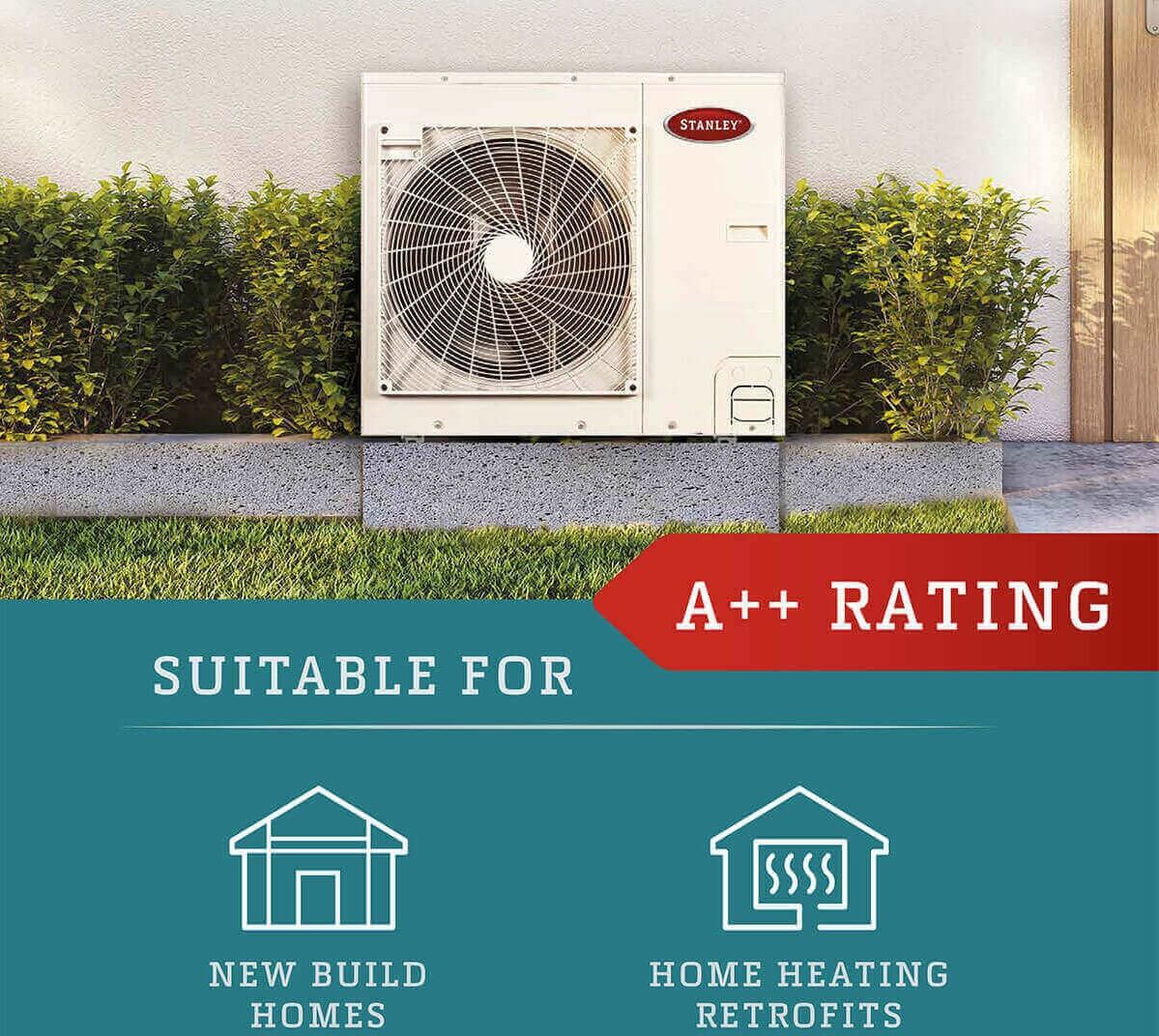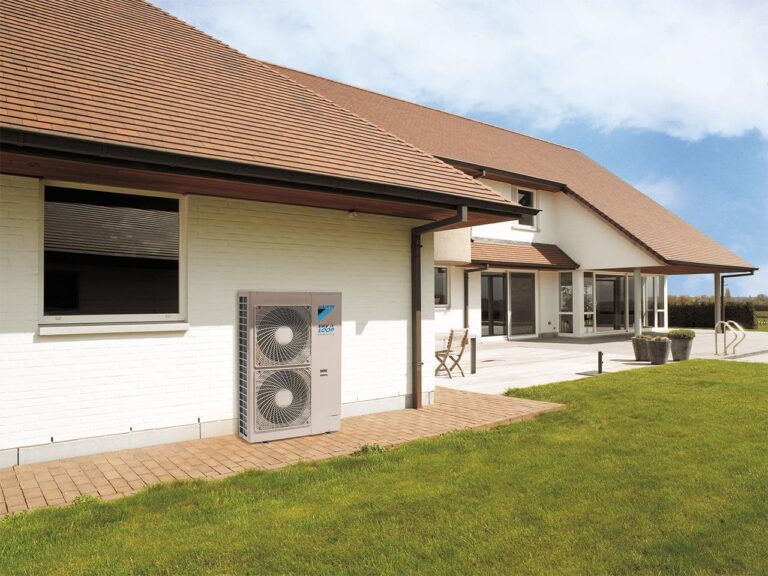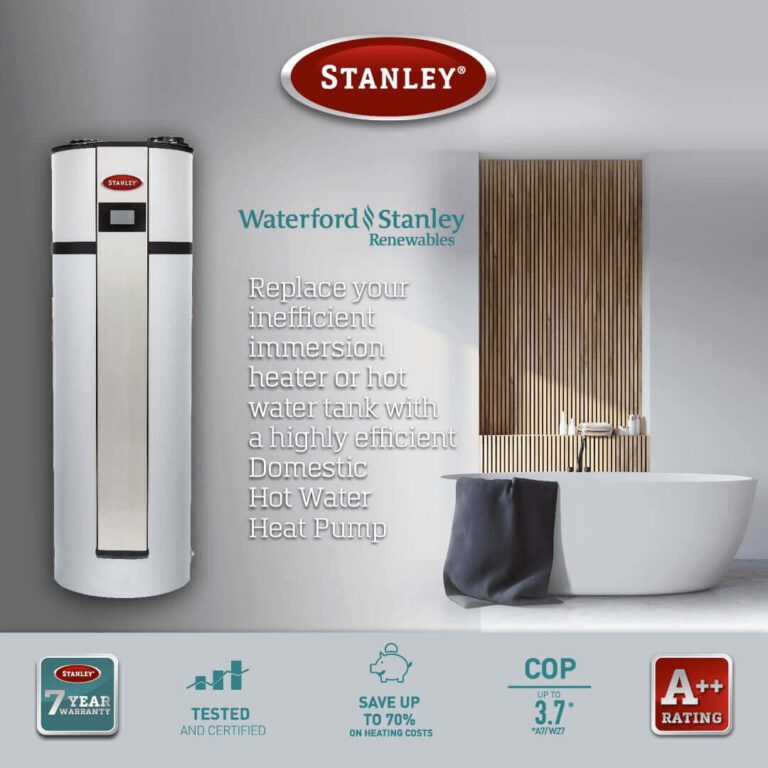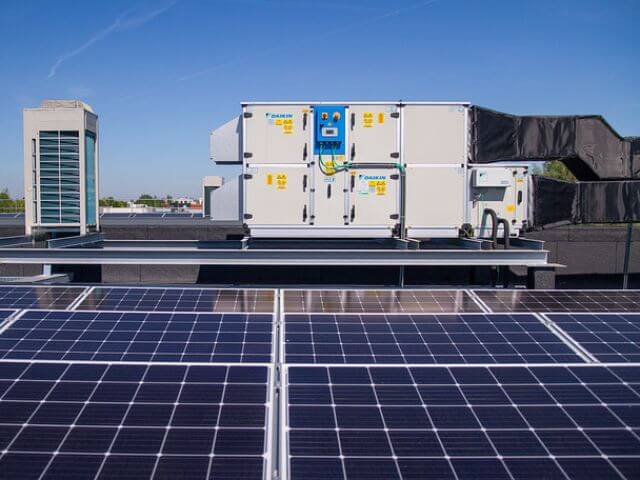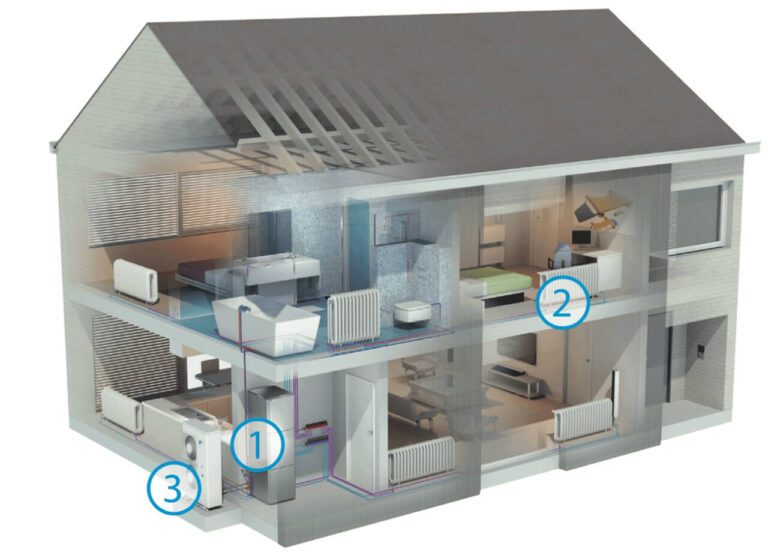How Air to Water Heat Pumps Operate
Air-to-water heat pumps operate by extracting heat from the ambient air and transferring it to a water-based heating system. These systems are commonly used for space heating, domestic hot water production, and in some cases, they can also be used for cooling. Here’s a breakdown of how air-to-water heat pumps work:
1. Evaporator:
- Heat Extraction from Air: The heat pump contains an outdoor unit with an evaporator coil. This coil is exposed to the outside air, and even in cold temperatures, there is still heat energy available. The refrigerant in the evaporator absorbs this heat from the air.
2. Refrigeration Cycle:
- Compressor: The refrigerant, now in a gaseous state, is compressed by a compressor. This process increases its temperature and pressure.
- Condenser: The hot, high-pressure refrigerant is then passed through a condenser coil inside the indoor unit. This coil is part of the water-based heating system.
- Heat Transfer to Water: As the refrigerant releases its heat, it transfers it to the water circulating through the indoor system, raising the water temperature.
3. Distribution System:
- Hydronic Heating System: The water, now heated, is circulated through a hydronic (water-based) heating system, which can include radiators, underfloor heating, or a fan coil unit.
4. Expansion Valve:
- The refrigerant, having released its heat, passes through an expansion valve, reducing its pressure and temperature, and it returns to the evaporator to start the cycle again.
5. Control System:
- Modern air-to-water heat pumps often come with advanced control systems that optimize performance based on outdoor and indoor temperatures. They may also integrate with smart home technologies for more efficient operation.
Key Features and Considerations:
- Efficiency:
- Air-to-water heat pumps are generally more efficient in moderate climates. They may become less efficient in very cold temperatures, so it’s essential to consider the local climate when choosing a system.
- Domestic Hot Water:
- Some air-to-water heat pumps are designed to provide both space heating and domestic hot water. In such systems, the hot water is stored in a tank and can be used for showers, faucets, etc.
- Installation Considerations:
- Proper installation is crucial for the efficiency of air-to-water heat pump systems. Adequate ventilation, proper sizing, and correct placement of the outdoor and indoor units are important factors.
- Integration with Renewable Electricity:
- For a fully renewable solution, these heat pumps can be paired with renewable electricity sources, such as solar panels.
- Hybrid Systems:
- Some installations combine air-to-water heat pumps with other heating technologies or renewable energy sources to create hybrid systems for increased efficiency and reliability.
Air-to-water heat pumps are a versatile and energy-efficient option for heating applications, particularly in regions with moderate climates. They offer a sustainable alternative to traditional heating systems and can contribute to reducing energy consumption and greenhouse gas emissions.

